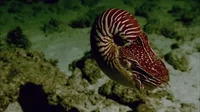Ocean and
space exploration blend at URI’s Graduate School of Oceanography
 Scientists with a NASA-led
expedition are operating from the Inner Space Center at the University of Rhode
Island’s Graduate School of Oceanography as colleagues explore the deep Pacific
Ocean to prepare to search for life in deep space.
Scientists with a NASA-led
expedition are operating from the Inner Space Center at the University of Rhode
Island’s Graduate School of Oceanography as colleagues explore the deep Pacific
Ocean to prepare to search for life in deep space.
The SUBSEA (Systematic Underwater
Biogeochemical Science and Exploration Analog) research program is a
partnership among NASA’s Ames Research Center in Silicon Valley, the National
Oceanic and Atmospheric Administration’s Office of Ocean Exploration and
Research, Woods Hole Oceanographic Institution, the Ocean Exploration Trust and
various academic centers that blend ocean and space research to better
understand if the watery worlds found on moons and planets in our solar system
offer conditions that could support microbial life.
 Last year, the SUBSEA shipboard team
used remotely operated vehicles (ROVs) deployed from the Ocean Exploration
Trust’s E/V Nautilus to explore Lō’ihi Seamount, an underwater volcano off the
southeastern coast of the Big Island of Hawaii.
Last year, the SUBSEA shipboard team
used remotely operated vehicles (ROVs) deployed from the Ocean Exploration
Trust’s E/V Nautilus to explore Lō’ihi Seamount, an underwater volcano off the
southeastern coast of the Big Island of Hawaii. The type of hydrothermal venting at the Lō`ihi Seamount is a good representation of conditions scientists believe exist on certain moons in the outer solar system.
The onshore NASA team, stationed in Mission Control at the Inner Space Center, learned how scientists and engineers communicate science objectives via telepresence.
The NASA team returns to the Inner
Space Center through June 8 to test specialized mission-planning software as
part of NASA’s long-term strategy for achieving extended human presence in
deep-space.
Scientists will study the work practices, habits, communication and information flows necessary to conduct remote science and exploration by observing operations conducted by the SUBSEA teams on the E/V Nautilus and at the Inner Space Center.
Scientists will study the work practices, habits, communication and information flows necessary to conduct remote science and exploration by observing operations conducted by the SUBSEA teams on the E/V Nautilus and at the Inner Space Center.
“The most important role of the
Inner Space Center for the SUBSEA project is to help NASA learn how to use
telepresence for ocean exploration as an analog to how it may be used for space
exploration,” said Dwight Coleman, director of the Inner Space Center.
SUBSEA researchers aboard E/V
Nautilus will conduct field programs at the Gorda Ridge offshore of northern
California and Oregon. This section of mid-ocean ridge is of interest to ocean
researchers because it is home to seafloor hydrothermal activity that departs
from the convention of black smoker hydrothermal systems, instead emitting
clear fluids from the seafloor.
The public will be able to watch
exploration of the seafloor via 24/7 live stream at www.nautiluslive.org as
ROVs collect high definition video footage from the sea floor.
A human-robotic voyage to the moon
or Mars might parallel SUBSEA’s mission architecture using robotic explorers
controlled by humans nearby as directed by a remote team of scientists.
Using the Inner Space Center’s cutting edge technology — including telepresence — for ocean research, exploration and education, the SUBSEA team will be able to test, evaluate and improve the necessary processes and technology tools needed for deep space exploration.
Using the Inner Space Center’s cutting edge technology — including telepresence — for ocean research, exploration and education, the SUBSEA team will be able to test, evaluate and improve the necessary processes and technology tools needed for deep space exploration.
Ultimately, the results of SUBSEA’s
research will inform strategies for conducting science via tele-operations at
destinations in space as well as scientists’ understanding of a wider range of
deep-sea environments for conducting ocean research.
“The Inner Space Center is the world
leader in supporting telepresence-based ocean exploration missions, so we’re
excited to serve as a base of operations for this groundbreaking project,” said
Coleman.
The SUBSEA Gorda Ridge Expedition
aboard Exploration Vessel Nautilus is funded by NOAA’s Office of Ocean
Exploration and Research (OER) and the NASA PSTAR program, and is a
collaboration among Ocean Exploration Trust, NASA Ames Research Center in
Silicon Valley, and NOAA OER to foster collaboration between ocean and space
exploration teams.